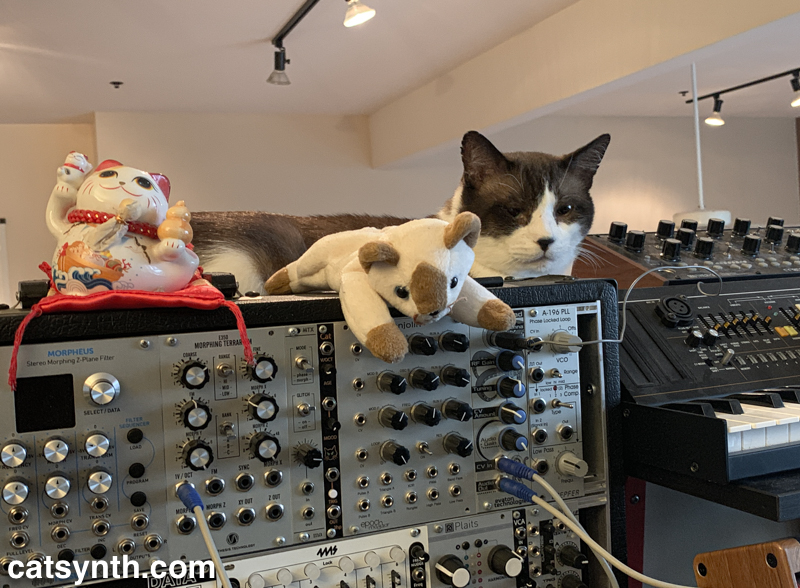
Big Merp enjoys hanging on the synth side of the studio among the cat tchotchkes. He blends in quite well behind the main modular system, next to a Moog Mother-32 and our Roland VP-03 vocoder.

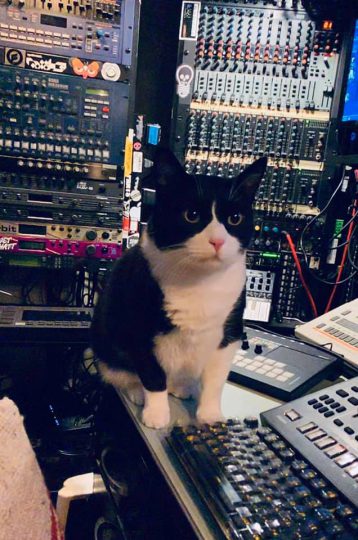
Meet Sascha, an adorable tuxedo cat in residence at Space Kitty in Seattle. Looking at their Facebook page, they have a rather impressive collection of synths. This photo only includes some of the rackmount and tabletop instruments, including several classic E-MU 1U modules and offerings from Roland and Korg.
Submitted by Neil Parker of Space Kitty via our Facebook page.
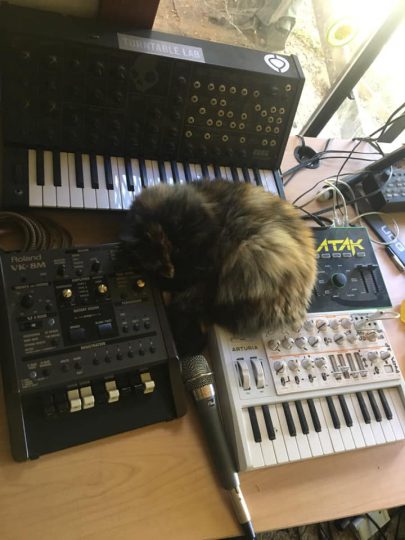
Meet Ms. Deucey, who has found a nice napping spot in between a Korg MS-20, white Arturia MicroBrute, a VK-8M from Roland, and something called “ATAK” 😸. Submitted by Elias Laughton via our Facebook page.
Here’s Ms Deucey, all of 13 years old, posing for the camera in my “pet free studio” 😬😬😬
Studios with cats are our favorite kind of “pet-free studio.”
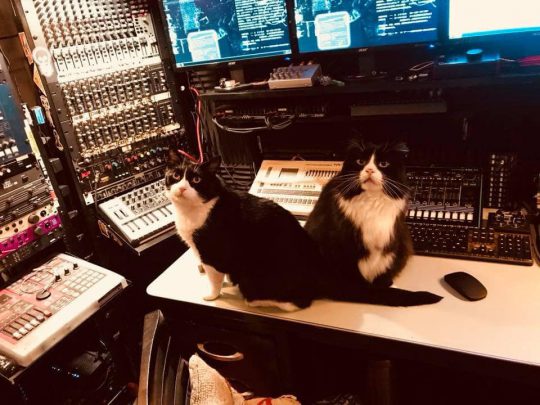
Blixa and Sasha hanging out in the studio. Submitted by Neil Parker via our Facebook page.
Identification of the synths and other gear in this picture left as an exercise to the reader.
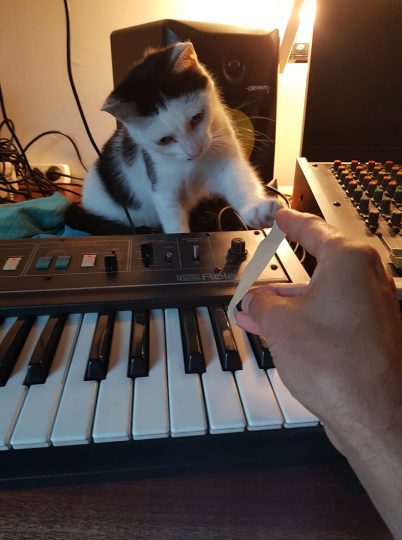
Cute Thala plays with her human and a vintage Roland synthesizer. I’m pretty sure it’s an RS-09 Organ/String synthesizer.
Submitted by Frederic Fantastic Preuss via our Facebook page.
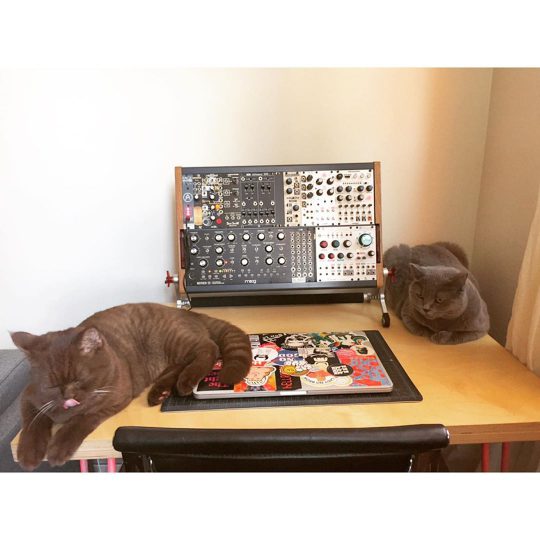
Zelda the Gray returns with her friend Murphy Brown and a modular system. I see a Moog Mother-32 along with offerings from Roland, Mutable Instruments, Sputnik, Make Noise, and more, housed in a 6U Arturia Rack Brute case. From zeldagraymurphybrown on Instagram.
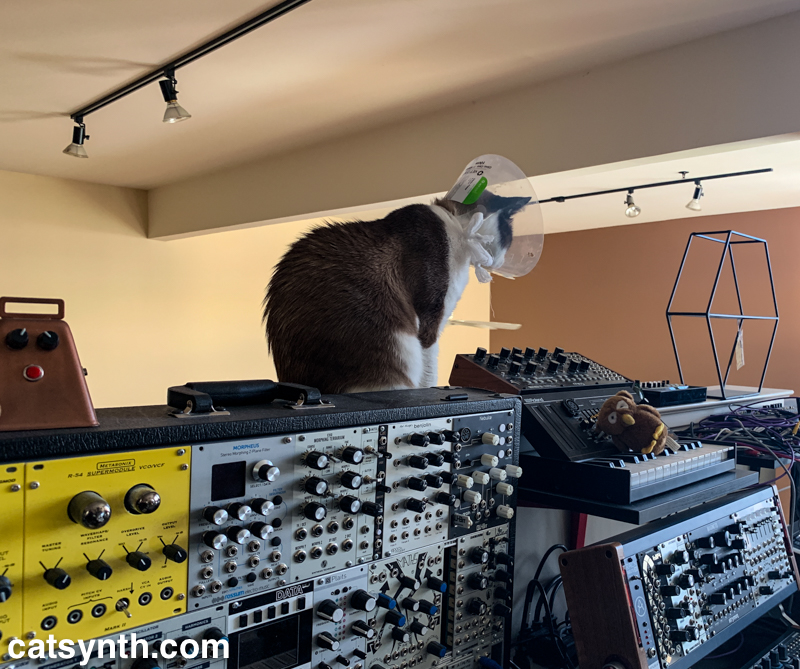
Big Merp jumps up on the ledge behind the modular synths (the main system as well as the RackBrute). Also present are the Deptronics Thunderbell, Moog Mother 32, Roland Boutique VP-03 (with owl), and the Korg Volca Beats.
Poor Merp has had to wear the cone of shame since his surgery on Friday, but as this picture shows, by Wednesday he was feeling much better and back to his regular mischievous self. So we decided to liberate him from the cone.
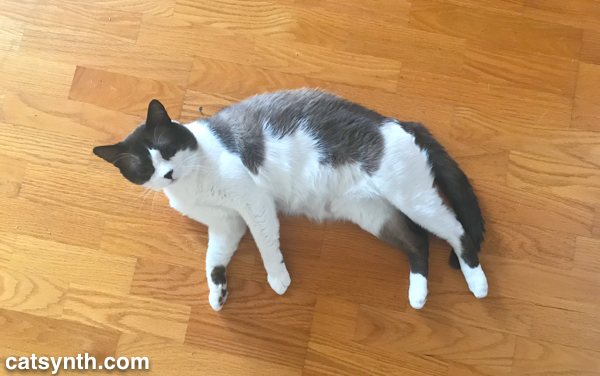
He seems much happier without it 😸